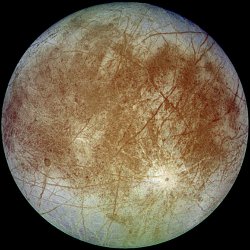Laboratory Studies

Ices are found in numerous locations in the universe and play a key role in the chemistry, physics and evolution of bodies within planetary systems. Our group contains scientists with diverse backgrounds who investigate icy solar system bodies such as the outer planet icy moons (Europa, Ganymede, Enceladus, Titan, Triton, etc.), comets, and the polar regions on Mars.
- What are the chemical and physical processes occurring on the surfaces of icy bodies?
- Are there habitable environments in the subsurface oceans of icy bodies in the outer solar system?
- What are the chemical processes occurring in Titan’s atmosphere and on its surface?
Planetary Ices: Missions and Projects
We study the chemical, physical, and spectral properties of ices to understand the surfaces, interiors, and atmospheres of icy bodies. Group members conduct research using laboratory studies, space-based observations, theoretical modeling, and data analysis. Additionally, there are a variety of technologies for planetary exploration that are being developed by members of our group including infrared spectroscopy (the Compositional Infrared Interferometric Spectrometer, CIRIS), ultraviolet spectroscopy, miniature X-ray fluorescence (PIXL on Mars 2020), fiber optic coupled UV spectroscopy (Titan Lake Probes), radar (GAs and Ice Spectrometer Radar, GAISR), and ambient pressure laser ionization for organic detection on Mars (picosecond laser ionization time-of-flight mass spectrometer, PicoTOF; and Mars Atmospheric Pressure Ionization, MAPI).